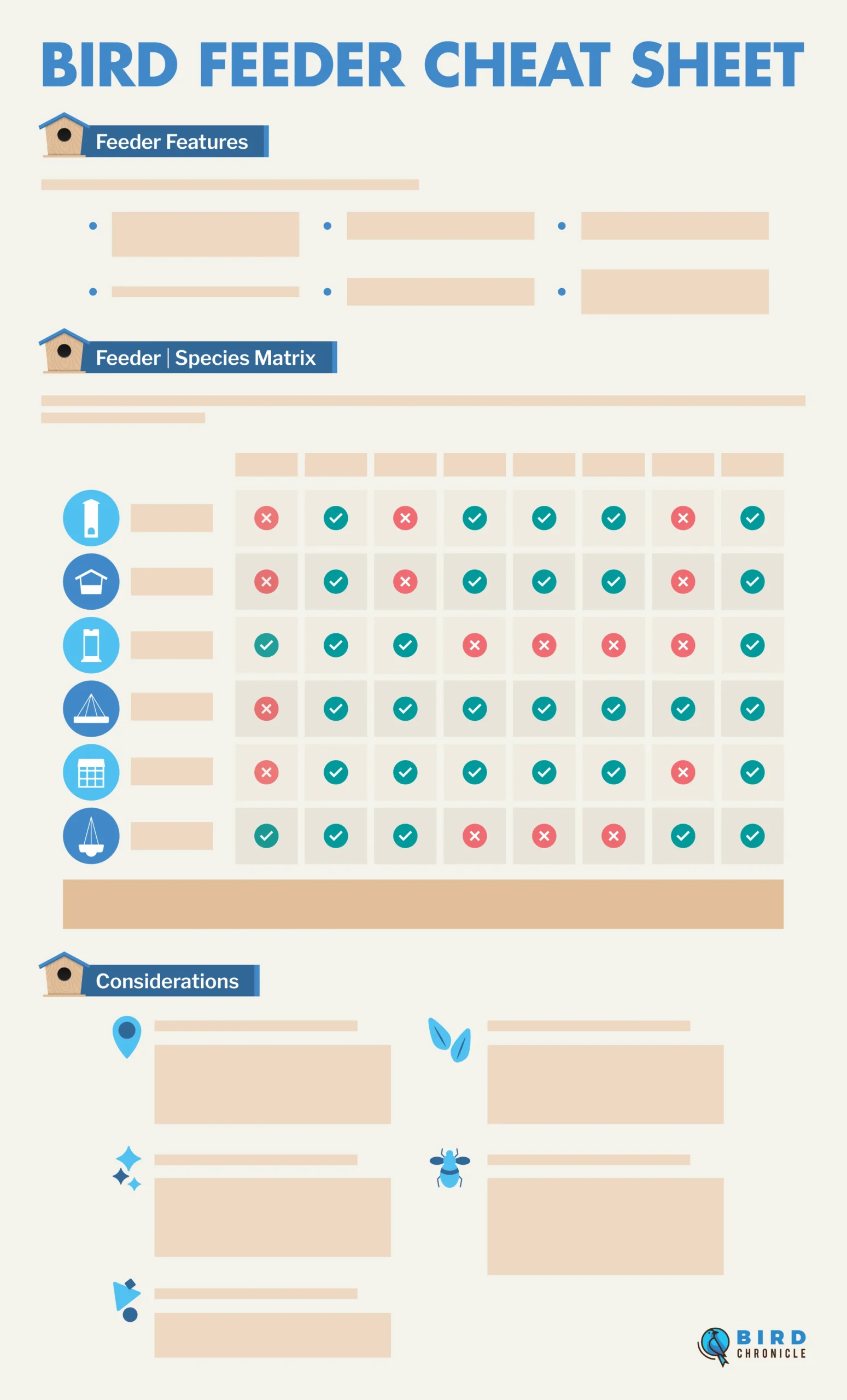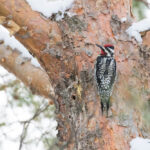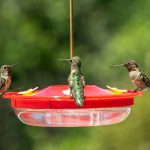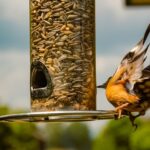Inquisitive hummingbirds may find their way into your home, garage, shed, kids’ playhouse, and other structures as they search for food.
A trapped hummingbird may become stressed and injure itself as it tries to escape. It is essential to help them get out without causing harm to the bird.
You can successfully get a hummingbird out of your house when you create a path for it to do it on its own. To do this, complete the following steps:
- Contain the hummingbird in one room.
- Create a quiet environment.
- Eliminate interior light and colorful sources.
- Open as many exits as possible.
- Encourage the hummingbird, but avoid direct contact.
- Close all exits once the bird has left, and implement prevention strategies.

Read on to learn more in detail about how to help hummingbirds get out of your home. There are several prevention tips for you to implement as well.
How To Get A Hummingbird Out Of Your House
Hummingbirds (Trochilidae) may enter a home, garage, or shed for a variety of reasons, but are often color-seeking for food sources.
They are attracted to colors (natural and artificial) that represent high nectar content in flowers.
If your home has red, orange, yellow, or bright greens and purples, a hummingbird may be drawn to it.
Garages often have a red emergency pull cord that may look similar to a small feeder or a trumpet vine (Campsis radicans). Tools may have colorful components.
Kids’ playhouses in the yard are colorful areas where a hummingbird could become trapped.
If your home has an indoor garden or colorful plants, this may also draw hummingbirds inside.
Screened-in porches may have an abundance of vegetation or colorful decor in them that are attractive to hummingbirds.
Hummingbirds cannot see in the dark, and even though they enter a state of torpor at night, they could be attracted to lighted areas before sleeping.
The following steps are ways in which you can safely get a hummingbird out of your home.
1. Contain The Hummingbird To One Room

It is important to act quickly. Hummingbirds have a high metabolism, needing to eat every 10 to 15 minutes. The longer they are trapped, the greater the chances of injury or struggle that negatively impacts their health.
If possible, have another person help you. Have one person keep an eye on where the hummingbird is or goes, while the other closes up other rooms.
A stressed-out and trapped hummingbird is likely going to fly high to the ceiling, as it seeks to put distance between itself and any threats or predators.
Do the following:
- Close the doors to all other rooms in the house.
- Make sure cupboard doors and closets are closed as well.
- Remove curtains from any opened windows so that the hummingbird does not become entangled.
2. Create A Quiet Environment
Put cats and dogs in a closed room so that they do not attack or stress out the bird. If your dog will not stop barking, have someone else take it outside for a walk.
Have small children play (supervised) in a separate, closed room.
Turn off the television, music, and other sources of noise.
Make sure any ceiling or tabletop fans are off.
3. Eliminate Interior Light And Colorful Sources
Turn off any lights in the room.
Close curtains, except for the window or area you hope to encourage the hummingbird to fly towards. Keep in mind that curtains can pose a risk to hummingbirds, so you may wish to take all curtains down.
You want the area of escape to be illuminated with light. Consider placing something bright red, such as a toy, fire extinguisher, T-shirt, or decor near the lighted area.
If you have a hummingbird feeder, place that by the opened area as well.
Remove or cover any brightly-colored objects that the hummingbird seems drawn to.
4. Open Exits
If you have not already done so, open any windows or doors in the room. Give the hummingbird as many escape routes as possible.
If you have a screenless roof skylight that opens, a hummingbird may try to exit at this high point.
Any opened windows should have the screen removed, and opened at the top of it since the hummingbird is likely to hover high.
5. Encourage The Hummingbird To Move
It is best that you do not handle the bird.
Hummingbirds can be difficult to catch in the first place. They have anatomy that allows them to fly fast in all different directions.
They have hollow bones, rotating shoulder joints to move their wings in figure-eight and other patterns, and strong pectoral and heart muscles. They can even fly in the rain and shake off the water mid-flight.
Instead of catching the bird, do the following:
- Use a long-handled object, such as a broom, without coming into contact with the bird.
- Use it to “shoo” the hummingbird towards the open window or door.
- If it perches on your long-handled tool, gently and slowly walk with it toward the opening.
- Move slowly so as not to stress the bird out more.
- It could become frantic and bang into the wall or windows, or become entangled in curtains.
A hummingbird will not attack you, but it may fly close in its stressed-like state. Do not swat at or hit the bird. Never use net-like material as this can cause injury to a bird.
Holding A Hummingbird

It is illegal to control, transport, or trap a hummingbird without a permit.
However, if it is injured or exhausted from trying to escape, pick it up very gently with your hands loosely cupped around it. Do not apply pressure with your hands.
It is not recommended to use a towel to pick it up, since flapping wings can become injured within the folds.
Open your hands to release the bird once you are outside. If the hummingbird is stunned, it may not fly right away.
Place it in the grass, away from structural openings, and supervise it to see if it flies away in the next few minutes.
In case of injury, and the hummingbird will not fly outside, place it in a box, and then contact your local wildlife rescue.
Do not place a towel in the box as this can further injure the bird. Supervise the injured bird until help arrives to keep it safe from any predators.
Wash your hands after handling a bird.
6. Close The Exit
As soon as the hummingbird has left, close all exits.
The bird may be disoriented and re-enter, so do this immediately and quickly.
What Should I Do If I Cannot Get The Hummingbird Out?

If you cannot get the hummingbird out, you should still close off all other rooms, turn off lights, fans, and noise, and remove any pets from the same area.
Leave a window or door open, and call a licensed bird or wildlife rescue center.
Remember that it is important to act quickly to ensure their survival.
What Should I Do If The Bird Dies?
The Migratory Bird Act of 1918, protects all birds and continues to ensure their safety and survival since they are essential to our ecosystem.
As a minder, it is illegal to harm or kill a bird, but unfortunately, deaths and injuries do happen unintentionally when they become trapped in human-made structures and cannot escape.
Some states require that bird deaths be reported to track the spread of diseases or other foul play. Check on your local and state protocols. A professional may come in to remove the dead bird for you.
If you have permission to handle the deceased bird, use a shovel (or gloved hands) to pick it up and place it in a plastic bag.
Tightly secure the bag to keep predators away from it. Dispose of the bag in a covered trash can. Wash your hands thoroughly.
Prevention Tips To Keep Hummingbirds Out Of Your House
If a hummingbird is repeatedly entering a home, garage, or shed, you will need to implement a few things to keep it out.
Consider doing the following:
- Remove red, orange, green, purple, and yellow items that hang from or are very near your home, this includes flowers and other vegetation.
- Place hummingbird feeders away from doors and windows.
- Ensure that all family members immediately close doors and other entrances to your home and structures.
- Repair any holes in screens or screened-in areas to keep hummingbirds (and other critters) out of enclosed areas.
- Have the local bird or wildlife rescue number in your phone contacts or posted on the refrigerator.
Summary
Hummingbirds can successfully leave your home and other enclosed premises when you create a way for them to find their own way out.
First, close off other open areas that a bird can enter, such as cupboards, closets, and other rooms.
In the room where the hummingbird is trapped, turn off any noise and fans, and remove pets.
Open any areas for exits such as doors and unscreened windows.
Since it is illegal to harm or trap a bird, use a long-handled tool to encourage it to move without touching it.
Close all exits and take care to close off any holes or other entrances to prevent the bird from coming back in.
If the bird is injured, use lightly-cupped hands to carry it outside. If it will not fly after a few minutes or is deceased, contact wildlife or bird rescue immediately.












